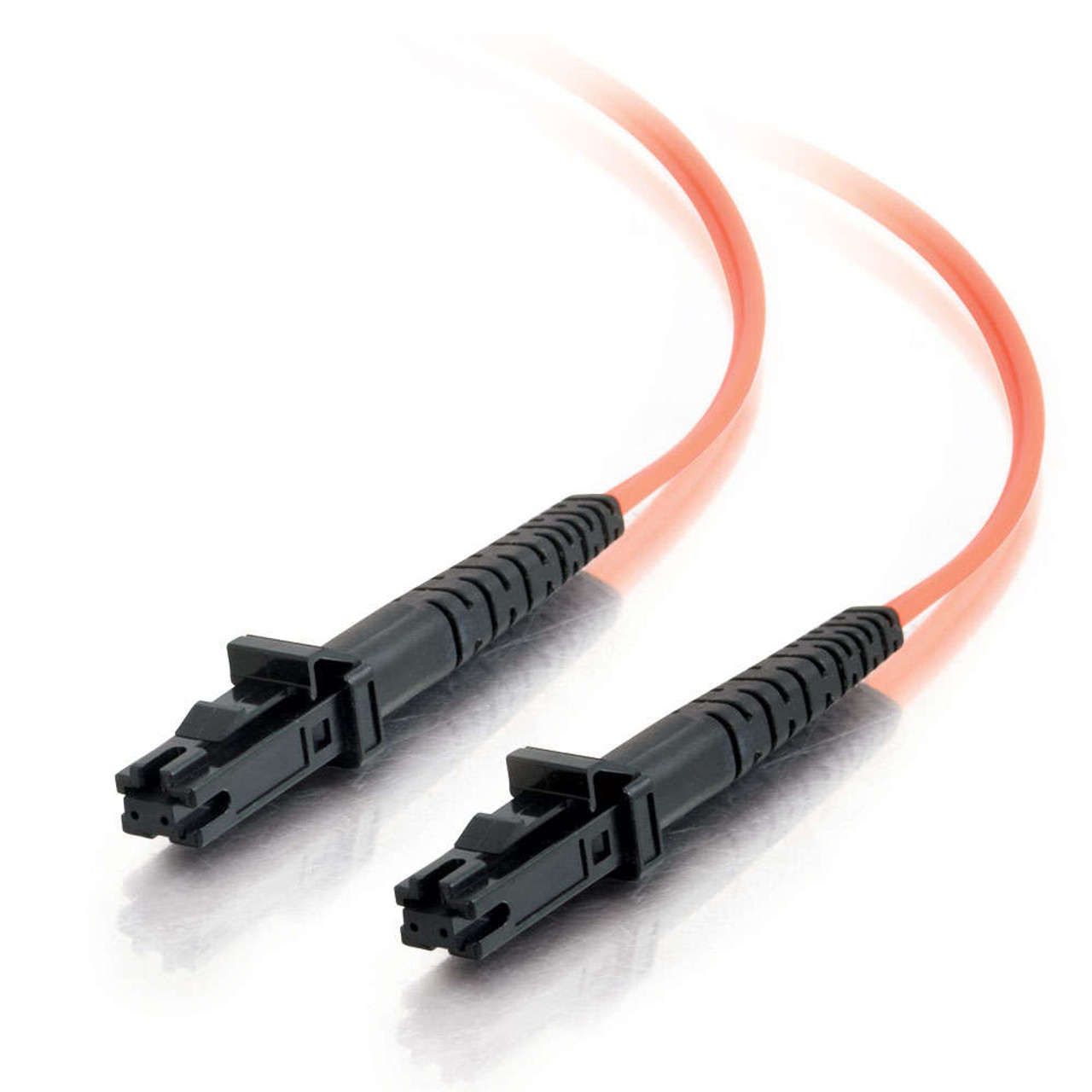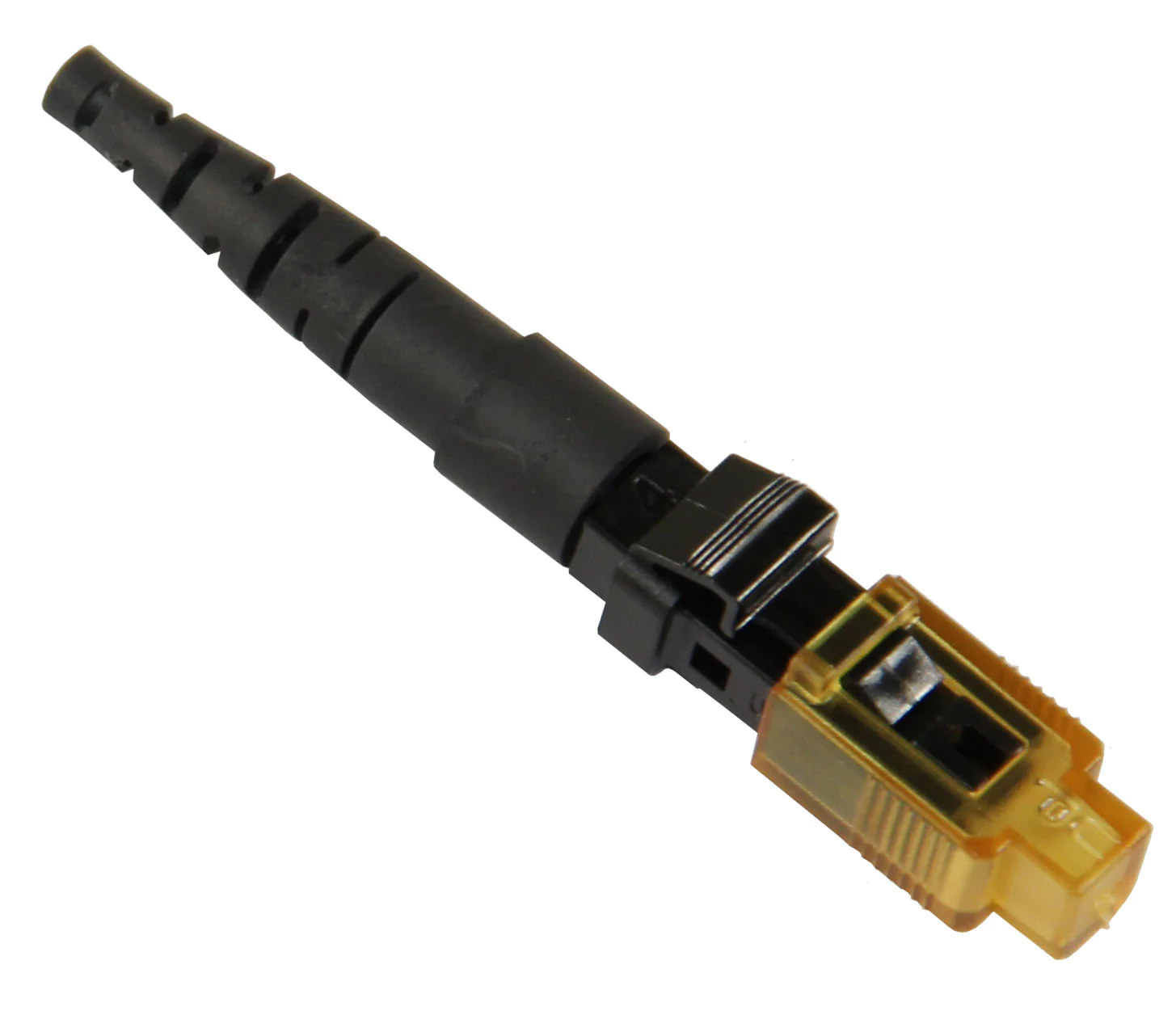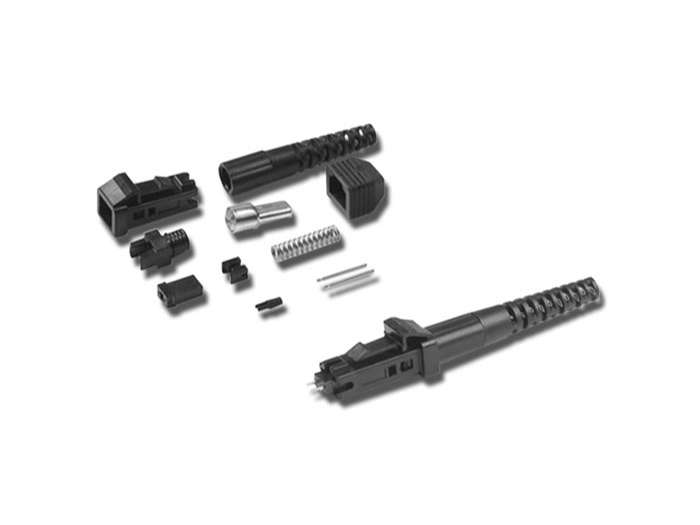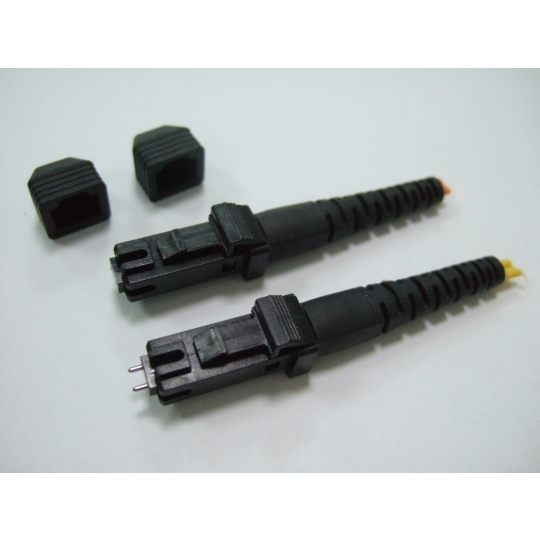The Role of MTRJ Connectors in Fiber Optic Networks: A Comprehensive Guide

Exploring MTRJ Connectors in Fiber Optic Networks
Fiber optic pigtail connectors are essential components in modern fiber optic networks. These connectors, also known as fiber optic terminations or splices, play a crucial role in establishing reliable connections between fiber optic cables. MTRJ connectors, in particular, have gained popularity due to their unique design and functionality. They offer a compact solution for connecting both transmit and receive fibers within a single connector, making them highly efficient for duplex communication. In this section, we will delve deeper into the design and benefits of MTRJ connectors in fiber optic networks.
Design and Structure of MTRJ Connectors
MTRJ connectors, also known as Mechanical Transfer Registered Jack connectors, are small form factor connectors widely used in fiber optic networks. They are specifically designed to provide a compact solution for duplex communication by combining both the transmit and receive fibers within a single connector.
The design of MTRJ connectors consists of several key components. The first component is the ferrule, which holds the fiber in place. It ensures precise alignment and optimal transmission of light signals. The housing is another important component that surrounds the ferrule and provides protection to the connection. It also offers stability to the connector, preventing any movement or damage during operation.
To ensure a secure and reliable connection, MTRJ connectors are equipped with a latch mechanism. This mechanism allows for easy insertion and removal of the connector while maintaining a stable connection. The latch mechanism ensures that the connector remains securely mated with its counterpart, minimizing signal loss or interruptions.
Overall, the design and structure of MTRJ connectors make them highly efficient in fiber optic networks. Their small size and duplex design enable high-density installations in limited spaces without compromising performance. With their precise alignment and secure connections, MTRJ connectors contribute to the seamless transmission of data in modern telecommunications and networking applications.

Compact Size, Easy Installation, and High Performance of MTRJ Connectors
MTRJ connectors offer several advantages that make them highly desirable in fiber optic networks. One of their key benefits is their compact size, which allows for high-density installations in limited spaces. This is particularly advantageous in environments where space is a constraint, such as data centers or telecommunication facilities.
In addition to their small form factor, MTRJ connectors are also known for their ease of installation. Their simple design and push-pull mechanism make them quick and straightforward to install, reducing both time and effort during network deployments. This can be especially beneficial when working on large-scale projects that require the installation of numerous connectors.
Despite their small size, MTRJ connectors deliver high performance and low insertion loss. They ensure reliable signal transmission with minimal disruption or degradation. This makes them suitable for a wide range of applications in telecommunications, data centers, and local area networks (LANs). Whether it's single-mode or multimode fiber optic cables, MTRJ connectors provide reliable connections that meet the demands of modern networking systems.
The compact size, easy installation process, and high-performance characteristics of MTRJ connectors make them an ideal choice for applications that require space-saving solutions without compromising reliability. Their versatility and efficiency contribute to the seamless operation of fiber optic networks across various industries.
MTRJ Connectors and their Compatibility with Various Fiber Optic Cables
MTRJ connectors are highly versatile and compatible with both single-mode and multimode fiber optic cables. This compatibility allows for seamless integration into different types of fiber optic networks, catering to a wide range of applications.
When it comes to single-mode fiber optic cables, which are designed for long-distance transmission, MTRJ connectors provide reliable connections that ensure efficient signal transmission. They maintain the integrity of the optical signal, minimizing loss and maximizing performance.
Similarly, MTRJ connectors are also compatible with multimode fiber optic cables, which are commonly used for shorter distances. Whether it's a local area network (LAN) or a data center application, MTRJ connectors offer reliable connections that support high-speed data transmission.
In addition to their compatibility with various fiber optic cable types, MTRJ connectors can also be used alongside other connector types such as SC (Subscriber Connector) and LC (Lucent Connector). This interoperability provides flexibility in network installations and allows for easy integration with existing infrastructure. It simplifies the process of connecting different components within a fiber optic network while maintaining optimal performance.
The compatibility of MTRJ connectors with different fiber optic cables and connector types makes them a versatile choice for network deployments. Their ability to seamlessly integrate into various setups ensures efficient communication and connectivity across diverse applications.

Installation and Maintenance Tips for MTRJ Connectors, and a Comparison to Other Connectors
Proper installation and maintenance are essential for ensuring optimal performance of MTRJ connectors in fiber optic networks. Here are some tips to consider during the installation process:
Installation Tips for MTRJ Connectors
Cleaning and Inspection: Before installing MTRJ connectors, it is crucial to clean and inspect the fiber optic connectors thoroughly. Any dirt, dust, or contaminants can affect the connection quality. Use lint-free wipes and approved cleaning solutions to clean the connectors properly.
Polishing and Termination: Following the correct polishing and termination procedures is vital for achieving optimal performance with MTRJ connectors. Ensure that the fibers are properly aligned, polished, and terminated according to industry standards.
Regular maintenance is also important to keep MTRJ connectors in good working condition. Perform periodic inspections and cleaning to prevent any potential issues that may arise over time.
Comparison of MTRJ Connectors with Other Connector Types
MTRJ connectors offer similar performance characteristics compared to other connector types like SC (Subscriber Connector) and LC (Lucent Connector). However, they have some distinct advantages due to their unique design:
Compact Size: One notable advantage of MTRJ connectors is their compact size. This makes them ideal for applications where space-saving is crucial, such as high-density installations or environments with limited space.
Duplex Design: The duplex design of MTRJ connectors allows both transmit and receive fibers to be combined within a single connector. This simplifies cable management and reduces the number of connections required in certain setups.
While SC and LC connectors are widely used in various applications, the compact size and duplex design of MTRJ connectors make them advantageous in specific scenarios where space efficiency is a priority.
Common Applications of MTRJ Connectors, Future Trends, and Practical Advice for Choosing and Using MTRJ Connectors
MTRJ connectors find widespread application in various industries and network setups. Some common applications of MTRJ connectors include:
Common Applications of MTRJ Connectors
Telecommunications Networks: MTRJ connectors are extensively used in telecommunications networks, including telephone systems and broadband services. They provide reliable connections for voice and data transmission.
Data Centers: MTRJ connectors are prevalent in data centers where high-density installations are required. They enable efficient connectivity between networking equipment, servers, and storage devices.
Local Area Networks (LANs): MTRJ connectors play a crucial role in LANs, facilitating fast and secure communication within office buildings or campuses.
Fiber-to-the-Home (FTTH) Installations: With the increasing demand for high-speed internet access at home, MTRJ connectors are used in FTTH installations to deliver fiber optic connectivity directly to residential premises.
Future Trends and Advancements in MTRJ Technology
Advancements in MTRJ technology continue to focus on improving data transmission speeds and reducing insertion loss. As network requirements evolve, future developments may include enhanced durability to withstand harsh environmental conditions and compatibility with higher bandwidth networks. These advancements aim to meet the growing demands of modern telecommunications and networking applications.
Practical Advice for Choosing and Using MTRJ Connectors
When selecting and using MTRJ connectors, it is important to consider several factors:
Cable Type: Ensure that the chosen MTRJ connector is compatible with the specific type of fiber optic cable being used, whether it is single-mode or multimode.
Network Requirements: Consider the specific requirements of your network setup, such as data transmission speed, distance limitations, and signal quality needs.
Environmental Conditions: Take into account the environmental conditions in which the connectors will be deployed. Factors such as temperature, humidity, and exposure to dust or chemicals can impact connector performance.
It is also crucial to follow the manufacturer's guidelines for proper installation and maintenance of MTRJ connectors. Adhering to these guidelines ensures optimal performance and longevity of the connectors within your fiber optic network.

Troubleshooting Common Issues with MTRJ Connectors in Fiber Optic Networks
When working with MTRJ connectors in fiber optic networks, it is important to be aware of common issues that may arise and how to troubleshoot them effectively.
Identifying and Resolving Connection Problems
Common connection issues with MTRJ connectors can include dirty or damaged connectors and improper alignment. To address these problems:
Dirty or Damaged Connectors: Regular inspection and cleaning of MTRJ connectors are crucial for maintaining optimal performance. Use lint-free wipes and approved cleaning solutions to remove any dirt or contaminants. If a connector is damaged, it should be replaced to ensure a reliable connection.
Improper Alignment: Proper alignment of the fibers within the MTRJ connector is essential for optimal signal transmission. If you suspect misalignment, realignment may be necessary. Consult manufacturer guidelines or seek professional assistance to ensure accurate alignment.
Addressing Signal Loss and Performance Degradation
Signal loss and performance degradation can occur due to various factors when using MTRJ connectors. Here are some steps to mitigate these issues:
Excessive Insertion Loss: Excessive insertion loss can impact signal quality. Ensure that the connector is properly inserted into the mating adapter, following manufacturer guidelines for insertion depth. If excessive loss persists, consider replacing the connector.
Fiber Bending: Improper cable management leading to fiber bending can cause signal loss. Avoid sharp bends or kinks in the fiber optic cable during installation or maintenance. Proper routing and strain relief techniques should be employed to minimize stress on the fibers.
Regular maintenance practices such as inspection, cleaning, and realignment can help prevent and resolve common issues with MTRJ connectors in fiber optic networks. By addressing these problems promptly, you can maintain reliable connections and optimize network performance.
The Importance of MTRJ Connectors in Fiber Optic Networks
MTRJ connectors play a crucial role in modern fiber optic networks by providing reliable and high-performance connections. Their compact size, compatibility with various fiber optic cables, and ease of installation make them a preferred choice in telecommunications and networking applications. By understanding the design, benefits, and maintenance of MTRJ connectors, professionals and students can effectively utilize them in fiber optic network deployments. With their ability to ensure seamless communication and connectivity, MTRJ connectors contribute to the efficient operation of telecommunications systems, data centers, LANs, and other critical infrastructure. Embracing the importance of MTRJ connectors empowers individuals to build robust fiber optic networks that meet the demands of today's interconnected world.
See Also
Exploring MTP/MPO Cables: Applications and Connectivity Solutions
Exploring IP68 Outdoor Fiber Optic Cables
Waterproof Connectors in FTTH Networks: Enhancing Performance and Reliability
Unlocking the Applications of MTP Connector Trunk Cables
Exploring Fiber Optic Cable Types: Single-mode vs. Multi-mode
About US
Follow Us
AnetFiber company's main products are indoor and outdoor optical fiber cables, outdoor waterproof pre-connected fiber-to-the-home products, PLC optical fiber splitters, optical fiber jumpers and pigtails, MTP®/MPO high-density big data product solutions, optical fiber field quick connectors and research and development molding, injection molding and production of optical fiber distribution boxes, optical fiber chassis cabinets, the market has expanded to the world, Europe, America, Asia, the Middle East and Latin America.
Address
Shenzhen City, Baoan District, Yanluo Street, Tangxiayong Community, Yangyong Industrial Road, Tonggangda New Energy Vehicle Park 406
Contacts
+86 199 2655 3586

